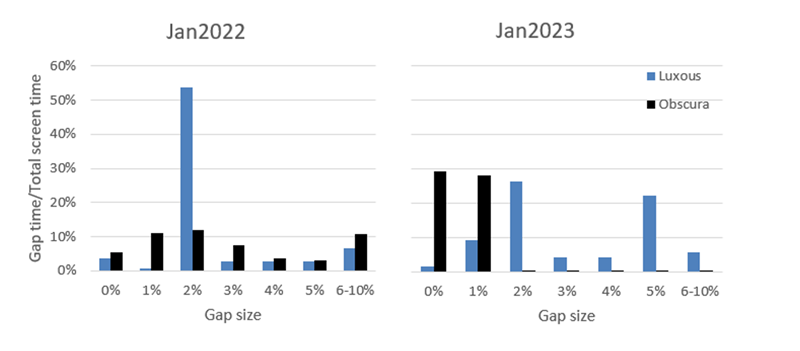What if you upgrade your lighting and it throws your greenhouse climate out of balance? That was the challenge faced by Hortipolaris at their site near Beijing, China. Fortunately, the company has had a close working relationship with Svensson since 2018 and they turned to their local Climate Consultant for help. The result was a carefully designed new strategy and then a year-on-year analysis of the successful outcome.
Against a backdrop of an explosive growth in the nearby capital, Hortipolaris has built a leading-edge facility encompassing 2.2 hectares of tomato cultivation, 2000 m2 of lettuce production and a similar amount for propagation.
Svensson’s China team has worked closely with Hortipolaris to maximize energy savings, while achieving the best growing climate. A new screen strategy was critical to achieving a sixth and a third of gas consumption for the two coldest winter months respectively.
After adopting high pressure sodium lighting (HPS) in the winter of 21-22, the extra heat from the lamps and excessive humidity due to active crop transpiration at night made climate control very challenging. An approach of opening the screens to create gaps to get rid of humidity led to undesirable heat loss.
A plan was devised to improve matters for the coming 22-23 winter season and data for December and January were analyzed and compared for the two consecutive winters.
Method: Optimize screen strategy for energy saving
- Change managementRes strategy of double screens on winter nights. Obscura would be completely closed at night.
- Measure and compare energy consumption and climate data for the two winters.

Figure 1: Night-time screen open-ness during the two winters studied
In figure 1, we see that during the night in January 2023, the Obscura screen (shown in black) is completely closed (<1% open). Instead, the Luxous screen opening is used to control temperature and humidity.
To visualize the difference in the daily screening strategy, we can see the example below (Figure 2). Instead of openings in both screens during the night when the HPS lamps are turned on, we see in December and January of year two that the Obscura screen is kept closed and the gap in the other screen is reduced in order to keep warmth in the greenhouse.

Figure 2: Comparison of the screen strategy over two nights
Results show a striking reduction in energy consumption
Monthly gas consumption was compared and a significant reduction in natural gas burned was achieved, despite a colder outside average night-time temperature in the second (22-23) winter ( See table 1).
To exclude the influence of the differing ambient conditions, gas consumption was expressed in centigrade as per degree of warming (by dividing the delta between outside and inside temperature with the quantity of gas used).
In Figure 3 we see a clear drop of 15% and 30.8% respectively for the December and January months. It was possible to run the greenhouse heating tubes at a lower temperature in year two using the new screen strategy, and resulting in the reduction in gas consumption at a critical time.

Figure 3: Monthly Gas consumption per ℃

Table 1: Comparison of Average Outside Temperature
Conclusion
If you’re using artificial lighting on cold winter nights, we recommend that you at least try to maintain one layer of your screens at 100% closed to achieve the best insulation and energy saving. For the second layer, we recommend a ‘mild gapping’ strategy in order to adjust temperature and humidity if necessary. The results from Hortipolaris’s trial showed that significant energy cost reductions was achieved through this recommendation.
Svensson screens have particularly good humidity transfer properties, which . It is not necessary to gap two screens at the same time to get rid of humidity because it will lead to unnecessary heat loss and a dramatic increase in heating costs. A slight humidity rise in the greenhouse was seen in the trial but the crop growth kept in good status.
Growers need to balance energy and humidity when using energy saving screens. We recommend minimizing the use of screen gaps to maximize energy saving without sacrificing crop health.
